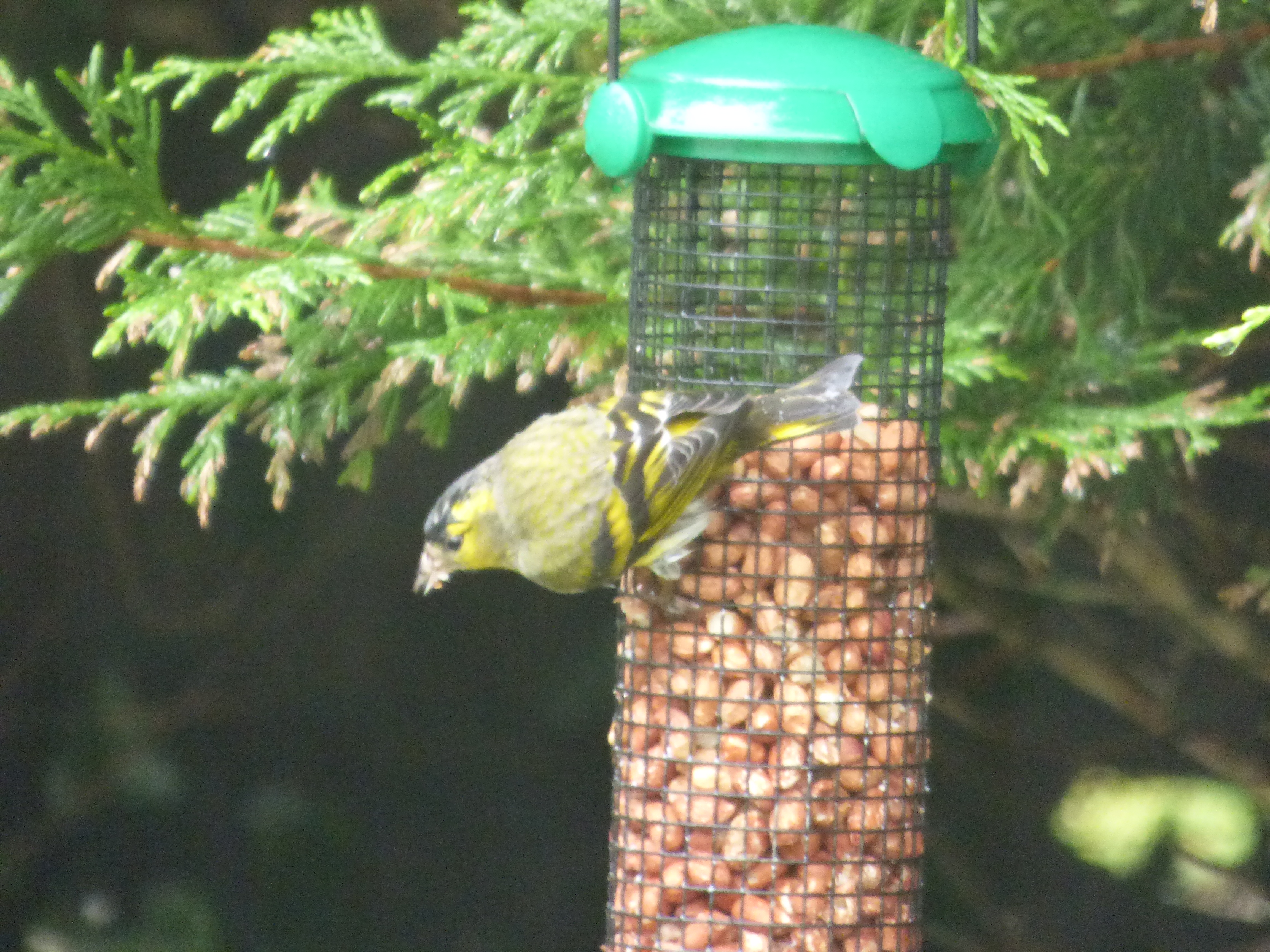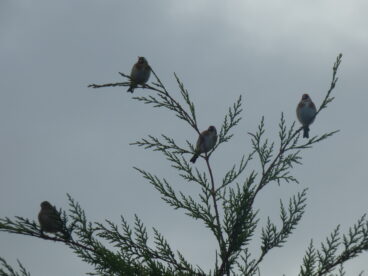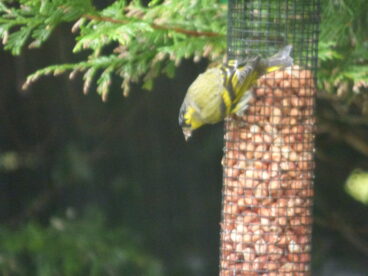Ok, I admit it, just sometimes I want to look out the window to the garden and catch sight of something different. A new flash of colour, a song that’s unusual…a new species to admire and learn from – close up. During February we had exactly that opportunity, two beautiful new garden bird species to observe from the kitchen window! The first encounter came the day after the Big Garden Birdwatch, just typical of nature to keep you on your toes! One glamourous Goldfinch shortly followed by another; a fabulous addition to our growing garden population!
The Goldfinch (Carduelis carduelis) is a gregarious and social bird, it didn’t take long for the hordes to arrive to demolish the sunflower hearts – interestingly the male goldfinches’ beak is highly adapted to extracting teasel seeds (the beaks differ between sexes – I’m going to find out more about this). The Irish for Goldfinch is Lasair Choille, meaning flame of the forest and it certainly set our garden alight with colour. The collective noun for goldfinches is a ‘Charm’, I love that. Unfortunately, in Victorian times, these gorgeous birds were captured and caged for their colourful beauty, appallingly trapped with lime and spring loaded cages. This led to a dramatic decline – in 1860 132,000 were reputedly taken in Sussex alone. Increasing this rapidly declining bird was the first and highest priorities of the Society of Protection of Birds (later to become the RSPB we know today. Their great work has saved many of our iconic species).
Devastatingly, the practice of liming birds still exists in countries such as Malta – the birds die a hideous and painful death, you can read more about this and Chris Packham’s awareness campaign – here I am so delighted that these vibrant birds are now visiting us every day and I can record their numbers, behaviour and the times they arrive (when I’m at home). I sit to observe them, twice a day, chasing everyone else away – sometimes eight/ten at a time. They always hang out at the tops of the conifers first before greedily taking over the feeders. I love watching them and their funny antics!
The second encounter happened a couple of weeks later, they came every day, for about thirty seconds – for a week – well that’s all that I actually saw! I haven’t seen them since the 21st February. Their colourful almost neon plumage took my breath away and I was delighted to have the beautiful Siskin (Spinus spinus) as a garden visitor, even for a short while. They are a common bird species (410,000 pairs), normally inhabiting conifer forests and heathland. We had what I think, was one winter male on its own which I thought was very interesting. The female builds the nest alone, so perhaps this is why? The female also incubates the eggs alone but both parents take on chick feeding duties. During the breeding season Siskins become very elusive, in German folklore they thought that the Siskins guarded a magic stone in their nest which would make them invisible. Siskins love Alder and Birch woodlands but perhaps they briefly enjoyed the shelter our conifers gave them. It was fantastic to see them up close. They can sometimes visit gardens when their natural food sources are scarce, I guess at the end of winter this would definitely be the case. They are supposedly attracted to red feeders, although our green ones seemed to suit them fine. They were acrobatic nibblers, hanging this way and that to eat the peanuts, dangling with agility.
These photos were all taken through our kitchen window so the quality isn’t great unfortunately! I don’t mind particularly as it’s mainly the observations, they give me the most joy. Sometimes, I think you can get caught up with taking the right photo so much, that a certain magic of the experience is lost. I’m sure that will change when my own exasperation at taking poor photos to aesthetically record, eventually gets on my nerves!

We’ve also had some rabbits visit the garden too! One in particular is rather partial to our grass.

Lots of February activity in our garden but I’m so excited for Spring. We have just put up a new nest box, so I’ve been watching obsessively to see if anyone is checking it out! I’ll let you know.
Thanks, as always, for reading!
Dara







6 Responses
I so enjoy reading your posts Dara!
Siskin’s are one of my favourite garden birds too (although nothing beats the cheeky long-tailed title for me). Your photos are fab but you’re right to remind yourself to enjoy the moment as so many memories are lost looking through a camera lense trying to get the “perfect” picture.
And I’ll be sure to read about the campaign, it’s horrible to think those sort of practices are still going on.
Hi there, thank you so much!! Yes, check out the work that Chris and others do, he is my hero!
Reblogged this on Young Fermanagh Naturalist and commented:
I started writing this post in early February, which is why
It seemed to find itself further down my blog, so I
though I would bump it to the top where it belongs. I
published it fully on February 27th Hope you enjoy it
Dara ☺️????????
What a great post, Dara! I love goldfinches too and we have been lucky enough to have them visit in our old garden and now here in Cornwall. They are regulars and come in numbers as you describe. They love niger seed and will eat as much as I can give them. I have only rarely been lucky enough to see a siskin, and never here in Cornwall, so I am envious! (I’m also rather envious of your photos!)
I remember when I was at primary school (looong time ago) we, as a class, wrote plea letters to the Italian government to stop them bird liming the migratory birds. We were so mad! It’s a shame it still occurs.
Loved the blog and the (new discovered) birds, the rabbit on the photo stole my heart.
Bye!
Aww yeah, rabbits are so cute! I know, it’s hard to believe it’s still happening! ???? Thanks, Marjolijn! Bye ☺️☺️